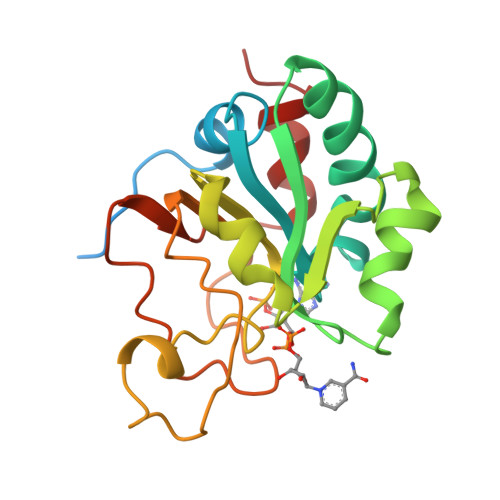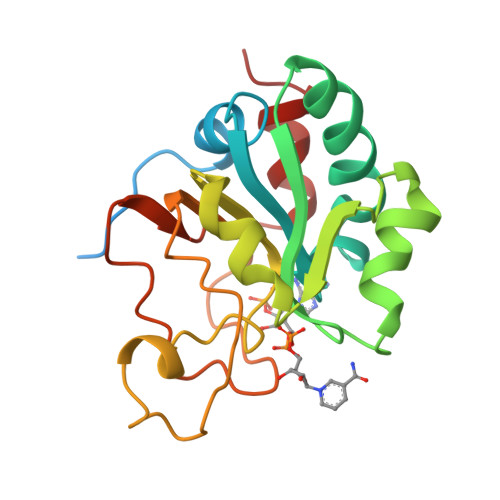Solution Structure of the Nadp(H)-Binding Component (Diii) of Proton-Translocating Transhydrogenase from Rhodospirillum Rubrum
Jeeves, M., Smith, K.J., Quirk, P.G., Cotton, N.P.J., Jackson, J.B.(2000) Biochim Biophys Acta 1459: 248
- PubMed: 11004437
- DOI: https://doi.org/10.1016/s0005-2728(00)00159-6
- Primary Citation of Related Structures:
1E3T - PubMed Abstract:
Transhydrogenase is a proton pump found in the membranes of bacteria and animal mitochondria. The solution structure of the expressed, 21.5 kDa, NADP(H)-binding component (dIII) of transhydrogenase from Rhodospirillum rubrum has been solved by NMR methods. This is the first description of the structure of dIII from a bacterial source. The protein adopts a Rossmann fold: an open, twisted, parallel beta-sheet, flanked by helices. However, the binding of NADP(+) to dIII is profoundly different to that seen in other Rossmann structures, in that its orientation is reversed: the adenosine moiety interacts with the first betaalphabetaalphabeta motif, and the nicotinamide with the second. Features in the structure that might be responsible for changes in nucleotide-binding affinity during catalysis, and for interaction with other components of the enzyme, are identified. The results are compared with the recently determined, high-resolution crystal structures of human and bovine dIII which also show the reversed nucleotide orientation.
Organizational Affiliation:
School of Biosciences, University of Birmingham, Edgbaston, B15 2TT, UK.



















